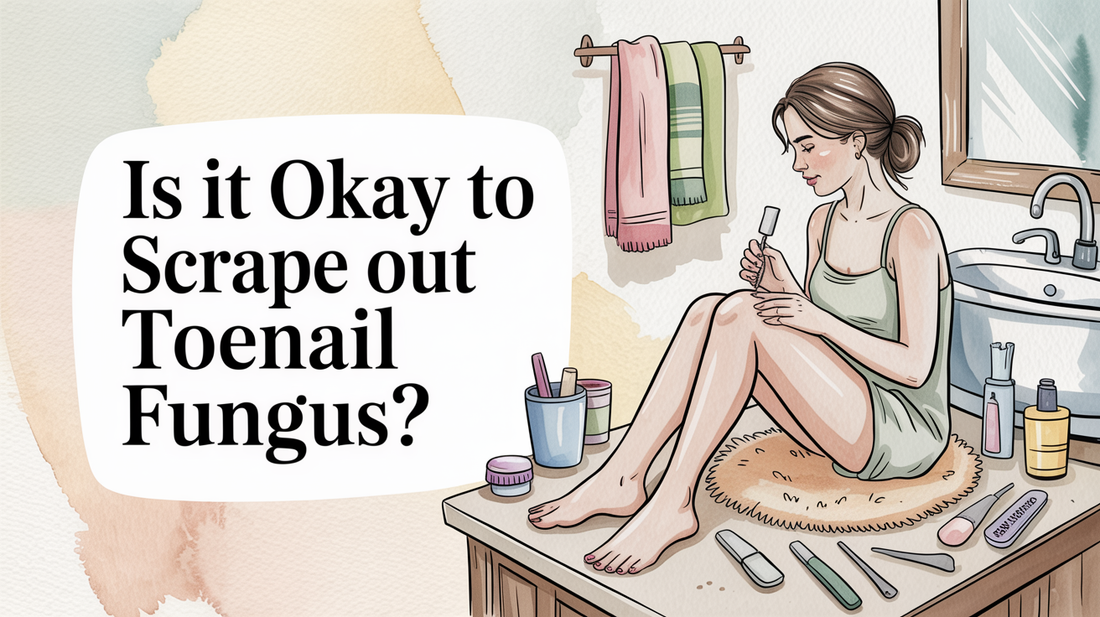Is it okay to scrape out toenail fungus?
debridement safety, nail trimming technique, when to see podiatrist — If you're struggling with toenail fungus, you might wonder about the safety of scraping or debriding your nails. This article outlines three key areas to consider, helping you with practical steps and guidance for nail care. We’ll explore what gentle debridement can do, the tools needed for safe trimming, and when it's essential to seek professional help.
What Gentle Debridement Can Do 🧭
Gentle debridement is a careful method aimed at removing infected or thickened nail tissue, which can improve nail health and allow topical treatments to penetrate more efficiently. By removing the infected debris, you may notice a reduction in fungal presence, enhancing the overall appearance of your nails.
This process can also allow antifungal medications to work more effectively by reaching deeper layers. Gentle filing and trimming can enhance nail appearance while also easing any discomfort. When combined with antifungal treatments, proper debridement may support quicker healing.
- Removes infected keratin debris that harbors fungal organisms.
- Thins thickened nails for better medication penetration.
- Improves nail appearance and reduces discomfort.
- Light surface removal is safe for mild infections if done correctly.
Try It Tonight: Calm, Fresh Feet ✨
- Wash feet with warm water and mild cleanser; dry thoroughly between toes.
- Apply a small amount of Kissable Feet where needed; massage until absorbed.
- Let skin breathe; slip on breathable socks if desired. Patch-test first if you’re new to this foot cream.
Tools & Hygiene for Safe Trimming ✨
Safe nail trimming and debridement require appropriate tools and strict hygiene practices to avoid further infection or injury. Employing the right equipment ensures that your at-home nail care is both effective and safe.
It's essential to use sterile nail clippers, files, and cuticle nippers designed for thicker nails. Disinfecting your tools with rubbing alcohol before and after use is crucial. Always trim nails straight across to minimize the risk of ingrown nails, and work slowly to avoid cutting healthy tissue.
- Use sterile tools specifically made for thick nails.
- Disinfect all tools thoroughly before and after use.
- Trim straight across to prevent complications.
- Wash hands thoroughly and consider wearing gloves to maintain hygiene.
Why We Recommend a Gentle Helper 🌿
Kissable Feet is designed for quick absorption and a soothing feel, making it a great addition to your routine. The gentle formula with tea tree, coconut, and calendula provides comfort without irritation.
- Fast-absorbing and non-greasy finish.
- Gentle sensation for sensitive, tired feet.
- Bedtime-friendly scent for a relaxing experience.
When DIY Becomes Dangerous 🔍
While at-home care can be effective for mild cases, certain circumstances necessitate professional intervention to avoid serious complications. It's essential to recognize when to seek help from a podiatrist to protect your nail health.
For instance, deep infections, severe thickening, or multiple affected nails should be treated by professionals. Look out for signs of bacterial infections, such as redness, swelling, or pus, which require immediate attention. Those with diabetes or compromised immune systems should always consult their healthcare provider.
- Deep infections need professional treatment.
- Signs of infection like redness or pus require immediate medical attention.
- Individuals with diabetes should consult healthcare providers promptly.
- Persistent pain or worsening symptoms indicate a need for professional care.

